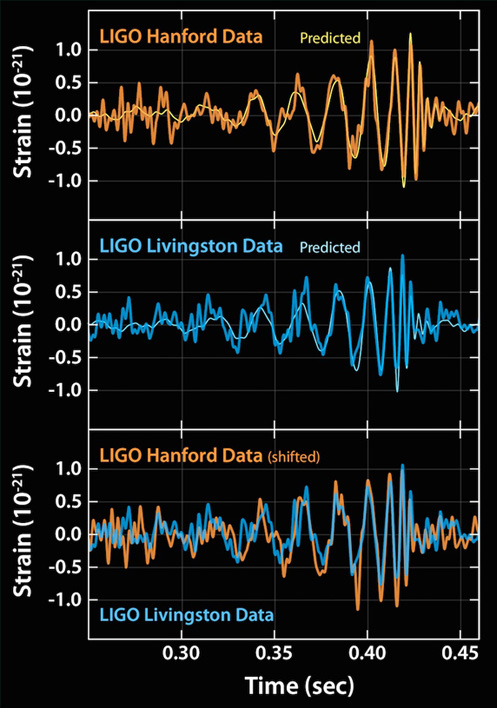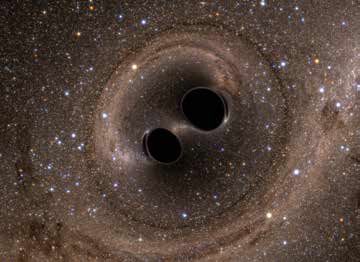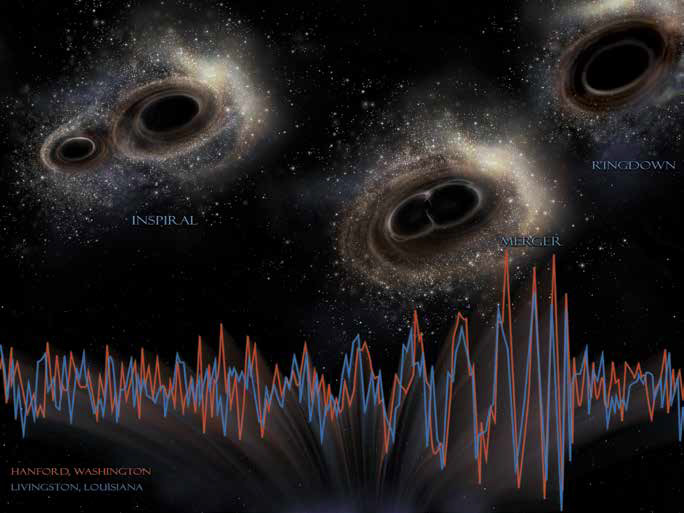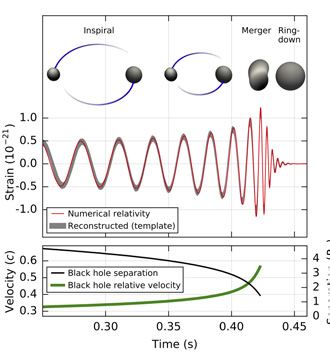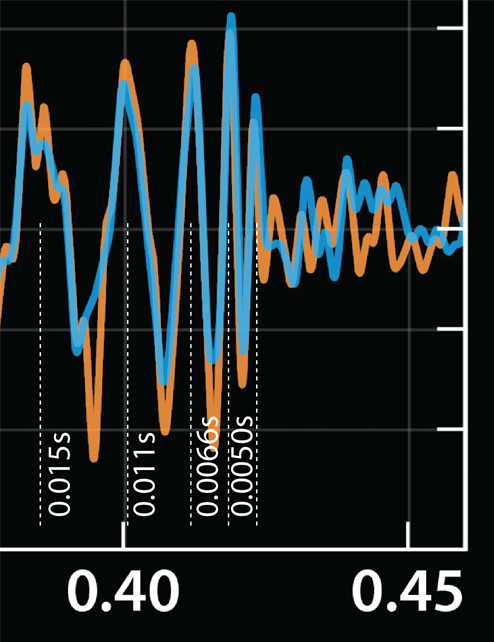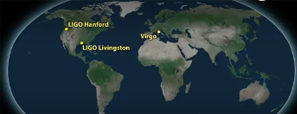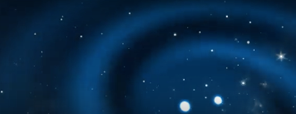Gravity Waves from Merging Neutron Stars
Images from LIGO site.
From the press release from the LIGO Lab: "For the first time, scientists have directly detected gravitational waves - ripples in space-time - in addition to light from the spectacular collision of two neutron stars. This marks the first time that a cosmic event has been viewed in both gravitational waves and light.
The discovery was made using the U.S.-based Laser Interferometer Gravitational-Wave Observatory (LIGO); the Europe-based Virgo detector; and some 70 ground- and space-based observatories."
"As these neutron stars spiraled together, they emitted gravitational waves that were detectable for about 100 seconds; when they collided, a flash of light in the form of gamma rays was emitted and seen on Earth about two seconds after the gravitational waves. In the days and weeks following the smashup, other forms of light, or electromagnetic radiation - including X-ray, ultraviolet, optical, infrared, and radio waves - were detected."
"The gravitational signal, named GW170817, was first detected on August 17, 2017 at 8:41 a.m. Eastern Daylight Time; the detection was made by the two identical LIGO detectors, located in Hanford, Washington, and Livingston, Louisiana. The information provided by the third detector, Virgo, situated near Pisa, Italy, enabled an improvement in localizing the cosmic event. At the time, LIGO was nearing the end of its second observing run since being upgraded in a program called Advanced LIGO, while Virgo had begun its first run after recently completing an upgrade known as Advanced Virgo."
The LIGO data indicated that the merger was at the relatively close distance of about 130 million light years. The inspiraling objects were estimate to be in the range of 1.1 to 1.6 solar masses, so they were in the range of neutron star masses, and not as large as black holes. Gamma ray bursts were detected by the Fermi space telescope and the Integral gamma-ray observatory operated by the European Space Agency. For years it has been suspected that observed short gamma-ray bursts were produced by neutron star mergers, but this was the first direct correlation.
"Observations made by the U.S. Gemini Observatory, the European Very Large Telescope, and the Hubble Space Telescope reveal signatures of recently synthesized material, including gold and platinum, solving a decades-long mystery of where about half of all elements heavier than iron are produced." This research has added to the picture of the synthesis of heavy elements, suggesting that some of the heavy elements that have been attributed to supernovae are instead formed in neutron star mergers.
"
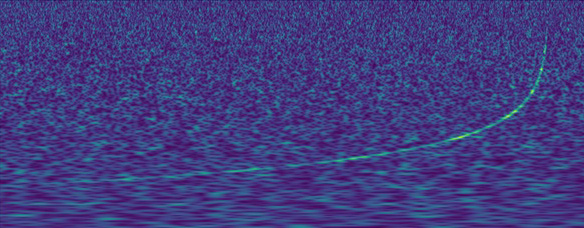
This spectrogram from the LIGO site shows the "chirp" or increasing frequency signal as the neutron stars came closer to each other, producing higher frequency as they circle faster.
An additional contribution from this detection of gravity waves is the provision of a value for the Hubble Constant that is independent of the main distance ladder used to determine cosmic distances. From NASA's LAMBDA coalition comes the following description: "Recent advances in gravitational wave (GW) detection technology provide an analysis approach independent of the cosmic distance ladder. The first estimate of the Hubble constant using a GW source detection is a joint effort of the LIGO/Virgo teams (Abbott et al. 2017), combined with collaborative followup observations identifying the optical counterpart of the source. In this determination, the amplitude of gravitational waves resulting from the merger of a binary neutron star system are analyzed to determine the luminosity distance to the system, and a cosmological redshift obtained from optical identification of the source host galaxy. Degeneracy between the computed luminosity distance and the binary orbital inclination angle is the primary source of uncertainty; the value obtained is H0 = 70.0-8+12. Future GW source detections should provide tighter constraints."
|
Index
Fundamental force concepts |
